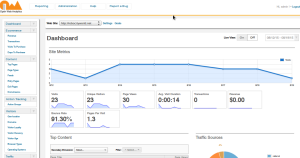In several of my past articles, I’ve discussed the productivity and retention benefits of allowing remote work in your organization. While 50 percent of knowledge workers say they are not allowed to work from home, I believe the trend is quickly evolving. LinkedIn’s 2019 Talent Trends report found there has been a 78 percent increase in job posts mentioning workplace flexibility since 2016. In 2020, I expect even more business leaders will embrace flexible work as a formal part of their organizations’ culture. As with any new office policy, there should be proper planning and guidelines set into place before the implementation.
Develop a clear timeline
Whether a flexible policy is a new concept or something your organization has been piloting, go forward with a clear timeline on how you’re going to make this a permanent policy. Business leaders should establish a directive that outlines when the policy will go into effect, what employees will be viable and any other restrictions. This should become a new part of the employee handbook and will no doubt be something recruiters reference when speaking to new candidates.
Enable intelligent collaboration
One of the ongoing qualms about remote work is that the remote employees are separated and disconnected from in-office personnel. The reality is that we have an endless amount of technology at our fingertips to ensure this does not happen. With ever-advancing video solutions, bandwidth management and the advent of cloud-deployed video collaboration platforms, online meetings are much more effective. Colleagues can communicate as though they’re meeting in person. This eliminates the distance barrier and makes remote employees a more ingrained part of the team.
Establishing accountability
To counter fears that remote employees aren’t contributing equally to their teams, establish protocol around accountability. There are many project management tools you could leverage or implement a less formal system of having remote employees share priorities and completed tasks on a regular basis. The goal is to have all team members be transparent and collaborative with their tasks. This ensures projects are handled effectively and no one is questioning the value of another’s contributions.
Don’t lose the in-person time
Simply because one works remotely does not mean they should never have the opportunity to see their colleagues. I’m a big advocate for off-site trainings, group workshops and even holiday gatherings as a way to ensure all employees connect. These events will become even more important to company culture as more employees work in satellite or home offices. There should be an annual schedule of group events that is distributed with enough notice so that as many people as possible are able to attend.
Balance and communication are the key words here. Fears around poor communication and inability to track performance are largely unfounded. Company culture and collaboration efforts do not need to suffer either. With the right guidelines and tools in place, remote employees will become an integral and respected part of your company culture.
Business & Finance Articles on Business 2 Community
(35)
Report Post






